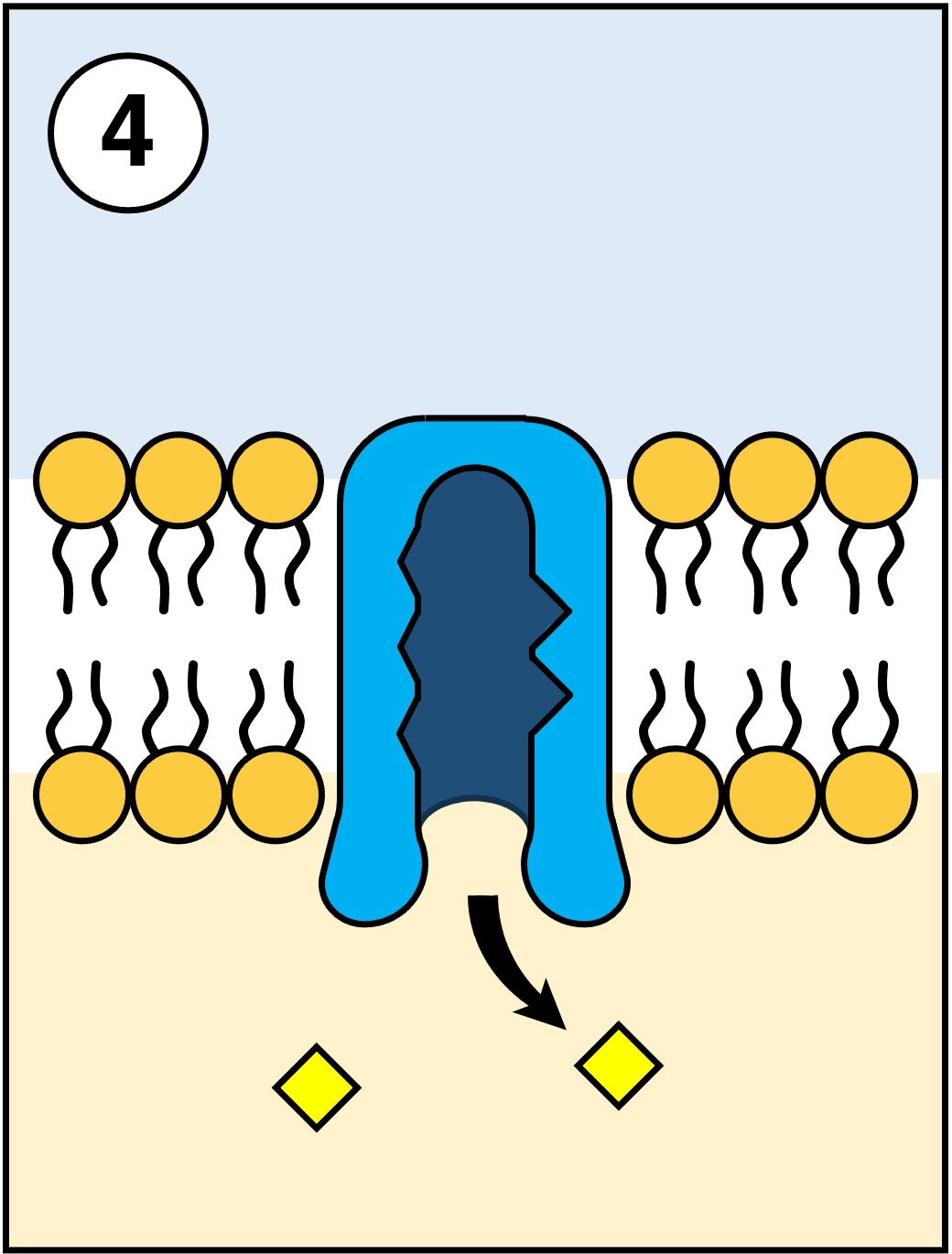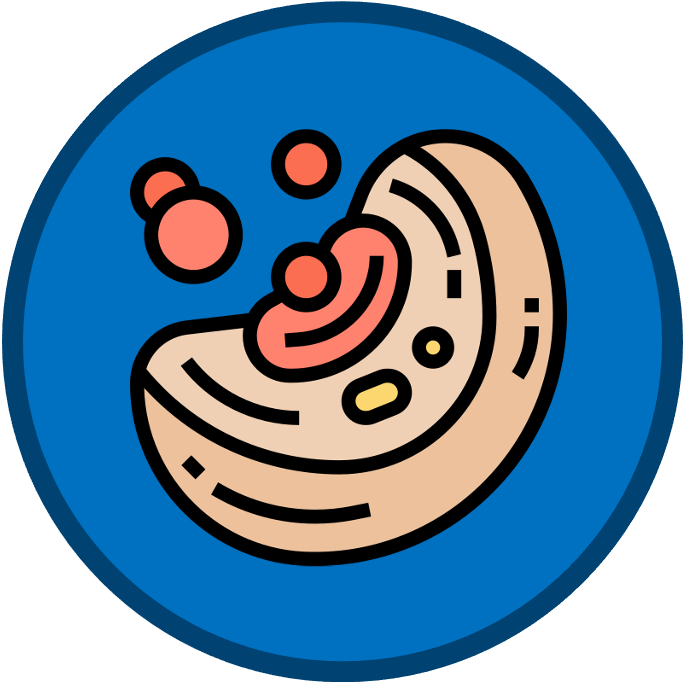

Carrier Proteins
Carrier proteins are transmembrane transporters which undergo a conformational change to translocate a material across the bilayer
-
They differ from ion channels in their method of transportation (ion channels possess an inert inner pore which is hydrophilic)
Carrier proteins can move two substances simultaneously (cotransport), either in the same direction (symport) or opposite directions (antiport)
Cotransport
-
Cotransporters link the movement of an ion along its concentration gradient to the movement of a solute against its concentration gradient
-
This is a form of secondary active transport, as the electrochemical gradient is used as an energy source (instead of ATP hydrolysis)
-
An example of cotransport is the absorption of glucose in the kidneys and small intestine (contransported with sodium ions)
Cotransporters
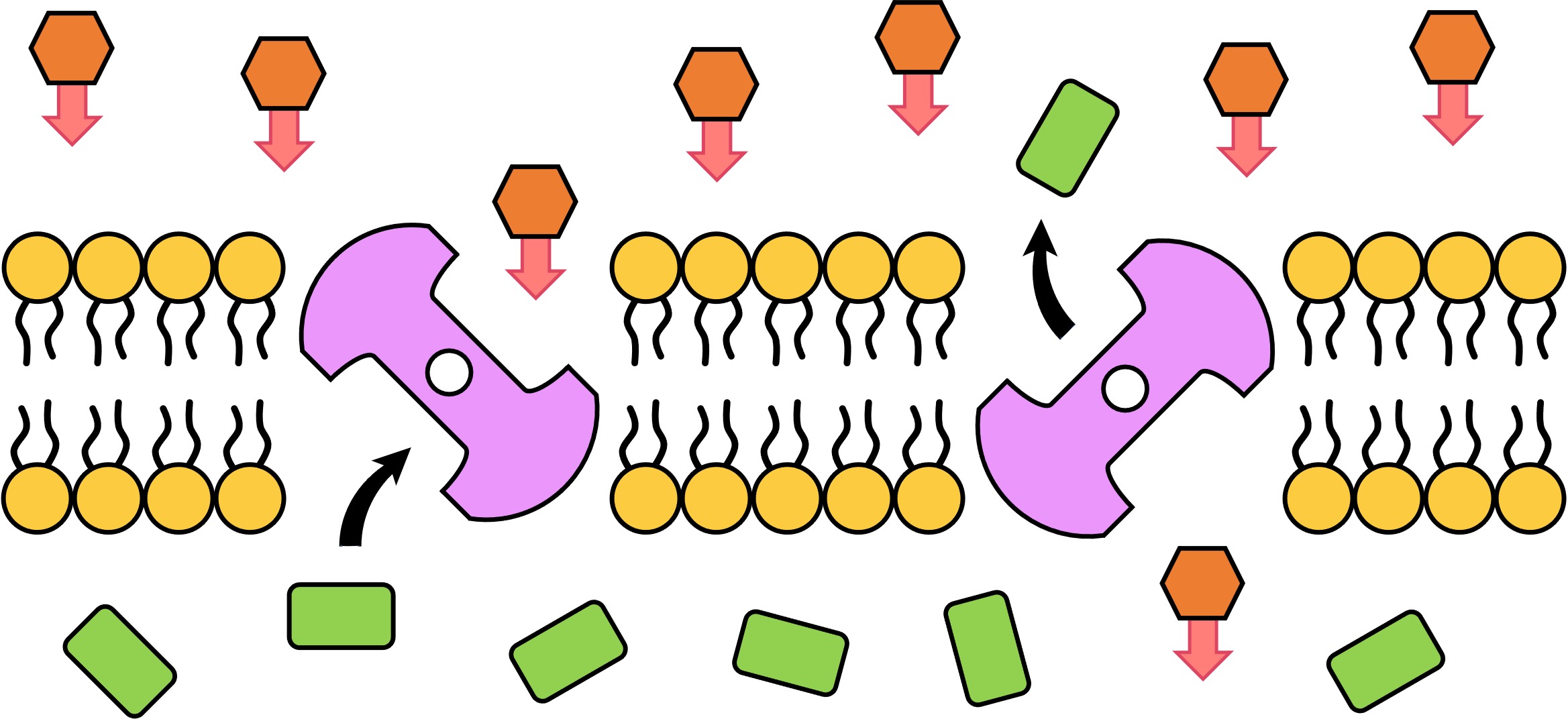
Antiport
-
Antitransporters move two molecules in opposite directions across the membrane
-
An example of antiport is the translocation of sodium and potassium ions by the sodium-potassium pump
-
This pump is used by nerve cells (neurons) to establish an electrochemical gradient across the membrane (resting potential)
-
Three sodium ions bind to intracellular sites on the sodium-potassium pump
-
A phosphate group is transferred to the pump via the hydrolysis of ATP
-
The pump undergoes a conformational change, translocating sodium across the membrane
-
The conformational change exposes two potassium binding sites on the extracellular surface of the pump
-
The phosphate group is released which causes the pump to return to its original conformation
-
This translocates the potassium across the membrane, completing the ion exchange
-
Antiporters
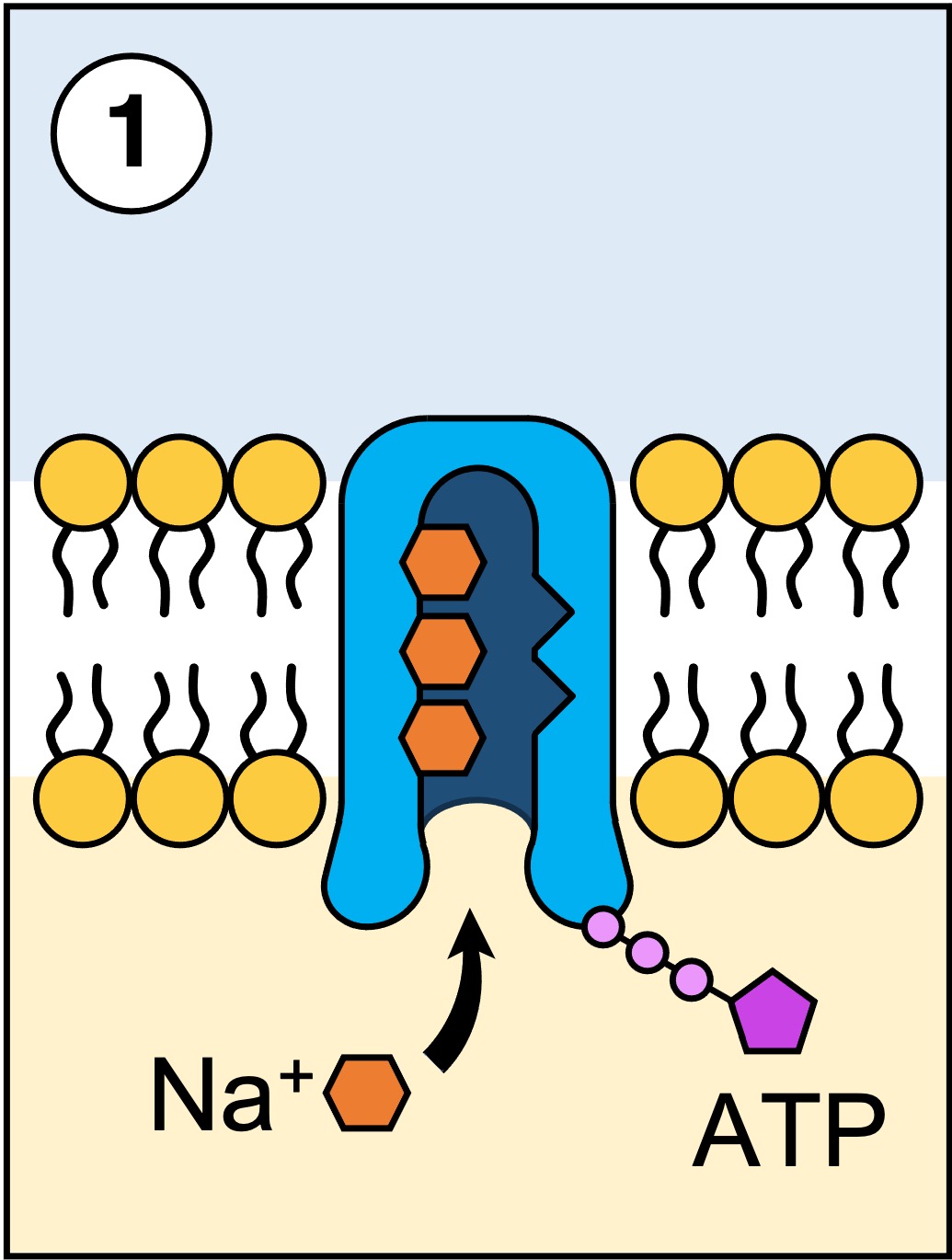
Sodium Binds

ATP Hydrolysis
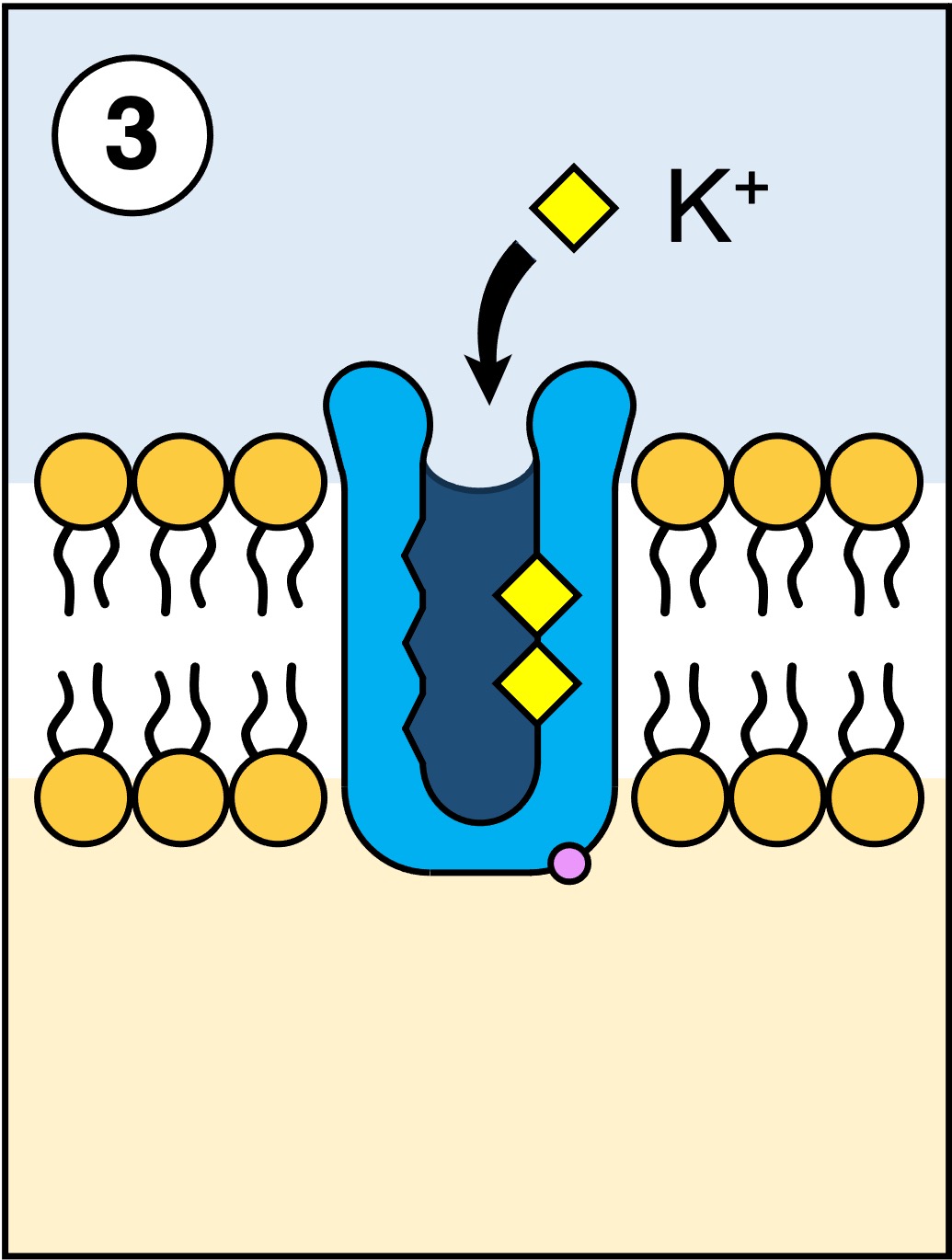
Potassium Binds
